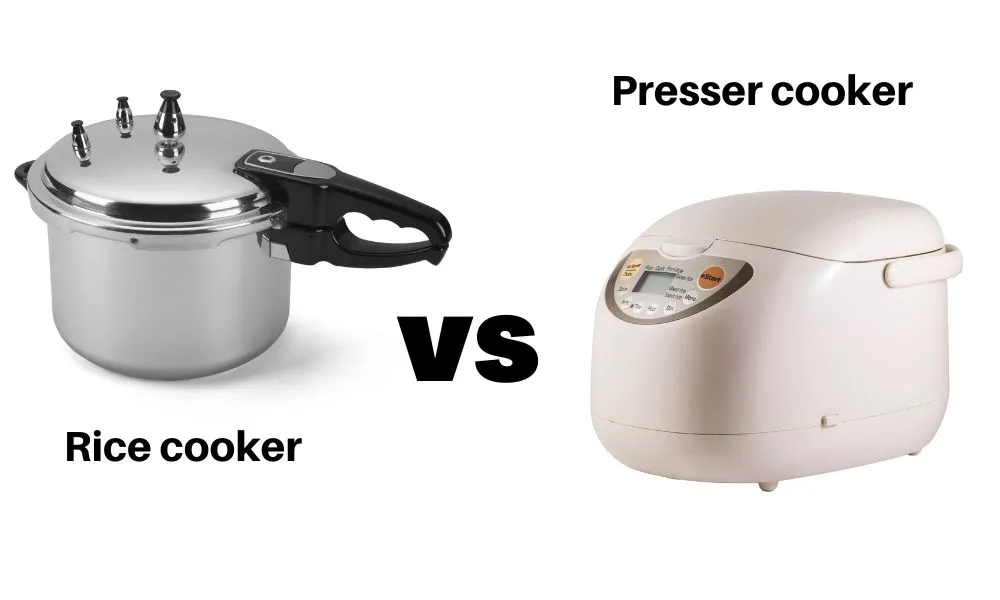Do you know How to install a portable dishwasher? Portable dishwashers are becoming increasingly popular because they can be taken with you when you move. They are also less expensive than regular dishwashers. There are a few things to consider when installing a portable dishwasher. You will need to make sure that there is enough room in the sink for the unit and that the water supply is adequate. You will also need to make sure that the unit has been properly installed and that the water supply is connected correctly. Read our article and learn how to install a portable dishwasher properly.
Table of Content
- Purpose of a portable dishwasher
- Types of portable dishwashers
- Features to consider before buying a portable dishwasher
- How to install a portable dishwasher
- Loading the dishwasher – How to install a portable dishwasher
- Operating the dishwasher – How to install a portable dishwasher
- Cleaning the dishwasher
- Benefits of using a portable dishwasher: Less time spent cleaning, less mess, and easy to move.
- Guidelines for selecting the best portable dishwasher for your needs
- Final Thought on How to install a portable dishwasher
- FAQs about How to install a portable dishwasher
Purpose of a portable dishwasher
Portable dishwashers are popular in homes because they can be moved from one kitchen to another. They are also useful if you have a big kitchen and want to wash dishes by hand. Portable dishwashers use a lot less water than full-sized dishwashers, so they’re good for washing large quantities of dishes quickly.
Types of portable dishwashers
Do you want to know how to install a portable dishwasher? Portable dishwashers come in three types: home use, camping, and travel. Each type has its own installation process.
Camping dishwashers
Portable dishwashers designed specifically for camping are lightweight, small, and easy to transport. They usually have a detachable hose and a spray arm that can be positioned for optimal cleaning. Some models also have a built-in strainer to catch food particles. These dishwashers are good for quick cleanups of camping meals or dishes before packing them away.
Travel dishwashers
Travel dishwashers are similar to camping dishwashers except they are designed for use in hotels, restaurants, or other places where large amounts of dirty dishes need to be cleaned quickly. They usually have more features than campers including a built-in water filter and adjustable spray head.
Home Use Dishwashers
The first type of portable dishwasher is the home-use dishwasher. These are the most common type of portable dishwasher and they are also the easiest to install. To install a home-use dishwasher, you will need access to an electrical outlet and a sink. First, unplug your kitchen appliances from the wall outlet. Next, locate your kitchen sink and plug in the portable dishwasher according to the manufacturer’s instructions. Finally, connect the portable dishwasher to the electrical outlet using the appropriate cords. You are now ready to start your new portable dishwasher!
Features to consider before buying a portable dishwasher
When looking to buy a portable dishwasher, it is important to consider features, size, and price. Portable dishwashers can come in a variety of sizes and features. Some may have more features than others, but all portable dishwashers should have at least one automatic detergent dispenser. The size of the dishwasher also plays an important role in deciding which model to buy. Larger models are better for large loads, while smaller models are better for small loads. Finally, price is a consideration. There are affordable portable dishwashers available, as well as more expensive models.
How to install a portable dishwasher
Planning your installation
No matter where you live, there’s a good chance that you’ll need to install a dishwasher at some point. But before you start shopping for one or calling an electrician, it’s important to consider a few key factors.
First, where will the dishwasher go? If it’s in your kitchen, you’ll need an outlet on the wall and access to water and power. If it’s in a separate room, you can probably get by with a portable model.
Second, what kind of power and water supply do I need? Most dishwashers require 220VAC 50Hz or 12VDC (or both). Make sure you have this information before making your purchase.
Finally, be sure to factor in how much space the dishwasher will take up.
How to install a portable dishwasher?
If you’re looking for a way to quickly and easily clean your dishes, a portable dishwasher is the perfect solution. In this step-by-step guide, we’ll show you how to install one in just minutes.
- First, measure the space where you want to install your dishwasher. You’ll need enough space to fit both the machine and your washing dishes.
- Next, find a suitable location for the machine. You should choose an area that’s well-lit and easy to access.
- Once you’ve chosen your spot, start by removing the old dishwasher from its location. Be sure to take note of any wiring or plumbing necessary for the new machine!
- Then, install the new dishwasher by following the manufacturer’s instructions. Make sure to read all of the warnings before starting!
Loading the dishwasher – How to install a portable dishwasher
There are a few things you’ll need to assemble your portable dishwasher before loading the dishes:
-The machine itself
-An upper rack
-A lower rack
-Water supply and drainage hose
-Dishwashing detergent
-Rinsing agent
Once you have all of these items assembled, it’s time to load the dishwasher. Start by filling the upper and lower racks with dishes. Make sure that the top dish is situated so that the water flow can reach it. Fit the hose onto one of the faucet ports on either side of the machine and connect it to a suitable water supply. Finally, add enough dishwashing detergent and rinse the agent to fill the dispenser. Select your desired cycle time and start washing!
Operating the dishwasher – How to install a portable dishwasher
Operating a dishwasher can be a daunting task for the first time. Selecting the correct cycle and settings can be difficult. Here are some tips to help you get started.
- Choose the right cycle for your dishes. There are six cycles available, each with its own specific set of cleaning instructions.
- Choose the right water temperature. Too cold water can cause ice to form on dishes, while too hot water can damage them. Use 145 degrees F (62 degrees C) as a guideline, but adjust according to your dishwasher’s indicator lights.
- Determine how many cups per cycle your dishwasher uses. Most dishwashers use at least two cups per cycle, but some use four or more cups per cycle if they have a built-in water filtration system.
Cleaning the dishwasher
Install a portable dishwasher to keep your kitchen clean and organized. Portable dishwashers are easy to move from one place to another, so you can keep your kitchen clean even when you’re not home. Portable dishwashers come in different capacities, so there’s sure to be one that fits your needs. Follow these tips for cleaning the dishwasher:
- Preheat the machine before starting by running a hot water cycle. This will help loosen any built-up dirt and food particles on the machine’s interior.
- Add a detergent solution to the dishwasher’s wash basin. Choose a product with a low sudsing action, as this will help reduce water spotting and build-up on dishes and utensils during the cleaning process.
- Add dishes and utensils to the machine according to the manufacturer’s instructions.
Benefits of using a portable dishwasher: Less time spent cleaning, less mess, and easy to move.
Portable dishwashers are becoming increasingly popular, as they offer several benefits over traditional dishwashers. For one, they’re less time-consuming to clean; due to their small size and easy mobility, portable dishwashers can be placed in more difficult-to-reach areas. Additionally, portable dishwashers tend to leave less of a mess than standard dishwashers – because they use less water and detergent, they don’t produce as much suds. Finally, portable dishwashers are often cheaper to operate than regular models – making them an attractive option for those on a budget.
Guidelines for selecting the best portable dishwasher for your needs
When it comes to selecting the best portable dishwasher for your needs, there are a few guidelines you should follow.
First and foremost, make sure you have a clear understanding of what you need your portable dishwasher to do. Do you just need it to clean dishes? Or can it also dry them? Are there specific features you require, like an automatic rinse agent or a built-in water filter? Once you know these basics, take into account things like price, size, and weight.
Another important factor is compatibility. Do you have an existing sink or counter space in which the portable dishwasher will fit? If so, that’s great! Otherwise, be sure to consider the dimensions of the portable dishwasher before making your purchase.
Once you’ve narrowed down your choices, be sure to read reviews and compare specs before making your purchase.
Final Thought on How to install a portable dishwasher
Portable dishwashers are a great choice for those who don’t have a lot of space, want to be able to take their dishwasher with them when they move, or just don’t have the space for a full-size unit. In most cases, all you need to do is unscrew the bottom of the machine and set it up on your counter.
FAQs about How to install a portable dishwasher
How do I connect a portable dishwasher to the kitchen faucet?
To connect a portable dishwasher to the kitchen faucet, you’ll need a faucet adapter. Remove the aerator from the faucet, attach the adapter, and then connect the dishwasher hose to the adapter securely.
Can I install a portable dishwasher without a dedicated water line?
Yes, portable dishwashers are designed to be connected to a kitchen faucet. They don’t require a dedicated water line or plumbing installation, making them convenient for renters or those with limited space.
Is it necessary to have a separate drain for a portable dishwasher?
No, portable dishwashers typically come with a built-in drain hose. You can direct the hose into the kitchen sink or connect it to a sink drain. Ensure that the drain hose is properly secured to prevent leaks.
How do I ensure the portable dishwasher is level during installation?
Leveling the dishwasher is essential for proper operation. Adjust the leveling feet on the bottom of the dishwasher until it is stable and doesn’t tilt. Use a bubble level to ensure it is perfectly level from front to back and side to side.
What are the electrical requirements for a portable dishwasher?
Portable dishwashers usually require a standard 120-volt electrical outlet. Ensure that the dishwasher is plugged into a grounded outlet and follow the manufacturer’s instructions for any specific electrical requirements.



